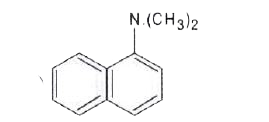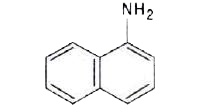Which of the following is absent in the primary and secondary structure for stem of Pinus
(a) Sieve tubes
(b) Mucilage duct
(c) Companion cells
(d) Phloem parenchyma
The correct Answer is:C
To determine which structure is absent in the primary and secondary structure of the stem of Pinus, we can follow these steps:
1. Identify the Plant Type: Recognize that Pinus is a gymnosperm, which means it is a non-flowering plant. Gymnosperms are generally considered less advanced than angiosperms, which are flowering plants.
2. Understand the Structures: Familiarize yourself with the different structures mentioned in the options:
- Seed Tubes: Present in both gymnosperms and angiosperms.
- Mucilage Ducts: Also present in both types of plants.
- Companion Cells: Specific to angiosperms; absent in gymnosperms.
- Phloem Parenchyma: Present in both gymnosperms and angiosperms.
3. Analyze Each Option:
- Option A (Seed Tubes): Present in both gymnosperms and angiosperms.
- Option B (Mucilage Ducts): Present in both gymnosperms and angiosperms.
- Option C (Companion Cells): Absent in gymnosperms; present in angiosperms.
- Option D (Phloem Parenchyma): Present in both gymnosperms and angiosperms.
4. Identify the Absence: Since companion cells are specifically mentioned as being absent in gymnosperms, including Pinus, this is the structure that does not exist in the primary and secondary structure of the stem of Pinus.
5. Conclusion: The answer to the question is C (Companion Cells), which are absent in the primary and secondary structure for the stem of Pinus.
Final Answer:
C (Companion Cells)
---
- Seed Tubes: Present in both gymnosperms and angiosperms.
- Mucilage Ducts: Also present in both types of plants.
- Companion Cells: Specific to angiosperms; absent in gymnosperms.
- Phloem Parenchyma: Present in both gymnosperms and angiosperms.
- Option A (Seed Tubes): Present in both gymnosperms and angiosperms.
- Option B (Mucilage Ducts): Present in both gymnosperms and angiosperms.
- Option C (Companion Cells): Absent in gymnosperms; present in angiosperms.
- Option D (Phloem Parenchyma): Present in both gymnosperms and angiosperms.
C (Companion Cells)
Topper's Solved these Questions
- ANATOMY OF FLOWERING PLANTS BOOK - CENGAGE BIOLOGY ENGLISHCHAPTER - ANATOMY OF FLOWERING PLANTS EXERCISE - ASSERTION-REASONING QUESTIONS
14 Videos
- ANATOMY OF FLOWERING PLANTS BOOK - CENGAGE BIOLOGY ENGLISHCHAPTER - ANATOMY OF FLOWERING PLANTS EXERCISE - ARCHIVES
38 Videos
- ANIMAL KINGDOMBOOK - CENGAGE BIOLOGY ENGLISHCHAPTER - ANIMAL KINGDOMEXERCISE - Archives
34 Videos
Similar Questions
What is meant by primary and secondary structure of proteins.
View SolutionWhich among the following is not an example of secondary structure of protein?
View SolutionWhich of the following is not an important secondary structural feature in large peptides and proteins ?
View SolutionWhich of the following acts as a primary as well a secondary consumer in the forest eco-system?
View SolutionClassify the following amines as primary, secondary and tertiary:

View SolutionClassify the following amines as primary, secondary and tertiary:

View Solutionprimary stem is
View SolutionPrimary vs Secondary Meristems
View SolutionDistinguish between Primary and secondary colours
View SolutionWhich of the following is used for distinguishing primary , secondary and tertiary alcohols ?
View Solution
